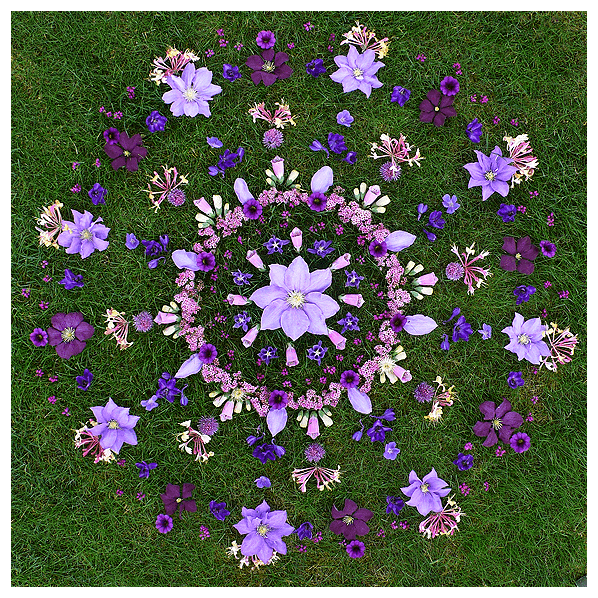Spring is a time of rebirth and renewal, for both plants and people. This year’s spring equinox feels like a more special transition than previous years. Over the course of human history, many cultures have marked this transition in some way with rituals.
For me, I always use botanicals as a tool to mark astrological or seasonal changes through ritual. Whether it’s a full moon or a major astrological transit, I like to burn plant resins. Burning plant matter, or smudges, is a great way to release energy and mark a moment with intention. These transitions mark as an opportunity to channel the intention of the moment, or to manifest change.
I’m curious, though: what specific plants were used to mark the vernal equinox? What are people doing to mark this coming equinox!? Let’s investigate!
Avensis
The book Ortus Santatis, written in the fifteenth century, notes that the usage is Avens. According to tradition, Geum urbanum was used as a protector against negative energy. The roots are harvested at the beginning of spring and placed in the house or pocket for their protective properties. The root exudes a clove-like aroma.
Greater celandine
Known as the “ephemeral spring” with its abundant yellow flower blankets.
Dogwood
The flowers appear at the beginning of spring. The picked flower can be used to make a floral mandala and the bark can be dried, ground and added to a loose incense mix.
Honeysuckle
The wonderfully aromatic flowers are another gift in early spring. The flowers can be sued to create a floral mandala to celebrate the beginning of spring.
tansy
The name Tansy is derived from the Greek word, Athanaton or immortal. A while back, Tansy cakes were made to mark the transition to spring.
purple
This is one of the first flowers to peek through the soil in early spring. These small purple flowers are subtly perfumed. My personal ritual is to collect these flowers and steep them in honey. You can spread the very tasty honey on toast.

Photo credit: Enchantedlivingarts
In Carl Neal’s Incense Magick, the following aromatic plants can be used to mark spring, either by burning the plant material or diffusing the essential oils.
|
Common name |
Latin name |
Element |
Purposes |
|
anise seed) |
Pimpinella anisum |
Sky |
Cleansing, youth |
|
Chamomile |
Matricaria Chamomile |
Water |
Sleep, love, cleansing |
|
Arabic gom |
Acacia Senegal |
Sky |
Protection |
|
Guar gum |
Cyamopsis tetragonolobus |
Firework |
Dedication |
|
Hyssop |
Hyssopus officinalis |
Firework |
Purification, protection, sanctification |
|
Lemongrass |
Cymbopogon citratis |
Sky |
Separation, purity |
|
Marjoram |
Origanum majorana |
Sky |
Love, happiness, protection |
|
Myrtle (leaf) |
Myrtus communis |
Water |
Fertility, love, longevity |
|
Palo Santo |
Bursera graveolens |
Sky |
Cleansing, happiness, strength |
|
Parsley (leaf) |
Petroselinum sativum |
Sky |
Protection, cleansing, fertility |
|
Pennyroyal |
Mentha pulegium |
Firework |
Power, protection, peace |
|
Rosemary |
Rosmarinus officinalis |
Firework |
Sleep, healing, cleansing |
|
Sage (leaf) |
Salvia officinalis |
Sky |
Immortality, longevity, wishes |
|
Sage (white) |
Salvia apiana |
Sky |
Divination, cleansing, purification |
|
Spikenard |
Aralia racemosa |
Sky |
Health, fidelity |
|
Star anise |
Illicium anisatum |
Sky |
Happiness, power |
|
Wild Lettuce |
Lactuca virosa |
Soil |
Divination, visions, revelation |
If you’d like to share this year’s Spring Equinox with others, here are some cool plant-focused virtual events!
References
- Beryl, Paul. “The Master Book of Herbal Medicine”. First edition 1996 Pages 60-61, 79, 215, 329.
- Grieve, M. “A Modern Herbal Remedy. Parts I and II”. Second edition 1982 pages 73, 179, 261, 409, 790, 835.
- Neal, Carl F. “Incense Magic”. First Edition 2012 Pages 266-268
For educational purposes only. This information has not been evaluated by the Food and Drug Administration. This information is not intended to diagnose, treat, cure, or prevent any disease, or to sell any product.
Read further

